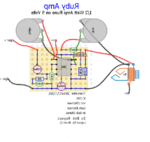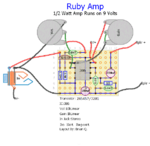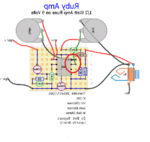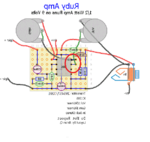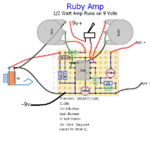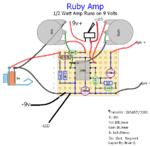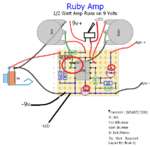Audioguru
Advanced Member level 7
- Joined
- Jan 19, 2008
- Messages
- 9,457
- Helped
- 2,151
- Reputation
- 4,302
- Reaction score
- 2,008
- Trophy points
- 1,393
- Location
- Toronto area of Canada
- Activity points
- 59,716
The backwards LED problem is simple but it has nothing to do with why the amplifier does not work.
An LED is a diode. It conducts current only when its anode wire is positive and its cathode wire is negative. Most 5mm size LEDs are very bright at 20mA but over 30mA will burn them out. With your 2.2V green LED and a 9V battery then a resistor value of 1.2k ohms will be bright and not use much battery power. Your resistor was 47 ohms which would have produced a current of (9V - 2.2V)/47 ohms= 145mA. The maximum allowed backwards voltage for an LED is 5V so yours might have been destroyed by 9V.
An LED is a diode. It conducts current only when its anode wire is positive and its cathode wire is negative. Most 5mm size LEDs are very bright at 20mA but over 30mA will burn them out. With your 2.2V green LED and a 9V battery then a resistor value of 1.2k ohms will be bright and not use much battery power. Your resistor was 47 ohms which would have produced a current of (9V - 2.2V)/47 ohms= 145mA. The maximum allowed backwards voltage for an LED is 5V so yours might have been destroyed by 9V.

